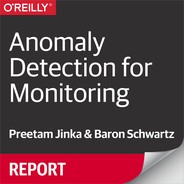Book Description
Monitoring, the practice of observing systems and determining if they're healthy, is hard--and getting harder. In a perfect world, your anomaly detection system would warn you about new behaviors and data patterns in time to fix problems before they happened, and would be completely foolproof, never ringing the alarm bell when it shouldn't. Such a system doesn't exist (yet), but that shouldn't make you lose sight of the fact that better anomaly detection is possible and can provide tremendous operational benefits.
This report demystifies the topic and clarifies some of the fundamental choices that you have to make when constructing anomaly detection mechanisms. You'll learn why some approaches to anomaly detection work better than others in certain situations, and why a better solution for some challenges may be within reach after all. Authors Preetam Jinka and Baron Schwartz introduce the various types of monitoring systems, explain the logic behind them, and help you to navigate the labyrinth of current anomaly detection by outlining the tradeoffs associated with different approaches so you can make judgments as you reach each fork in the road.
